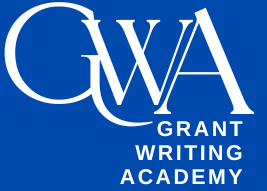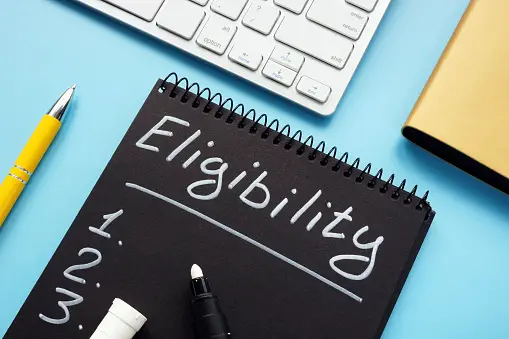If you want to know how to write a cover letter for a grant proposal that captures attention, sparks curiosity, and convinces funders you’re worth their investment, you’re in the right place.
Ready?
Let’s transform your cover letter into a powerful invitation to partner.
Why Your Cover Letter Matters More Than You Think
Before we get into structure and style, let’s be honest: funders are swamped. When a program officer opens a stack of applications, the cover letter is their first—and sometimes only—chance to gauge whether your project aligns with their priorities. A well-crafted letter serves as a:
- Gatekeeper: It filters out unfocused proposals.
- Storyteller: It tells your mission in a few compelling paragraphs.
- Relationship Builder: It connects your values with the funder’s vision.
Without a polished cover letter for a grant proposal, even the most robust budgets and timelines risk gathering dust on a reviewer’s desk.
The Anatomy of a Winning Cover Letter
Let’s break down each section of the letter—from header to sign-off—and equip you with examples and templates.
a) Header & Contact Information
Must-haves:
- Your organization’s logo and address
- Date of submission in full (e.g., June 18, 2025)
- Funder’s name, title, and mailing address
Example Header:
Grant Writing Academy
123 Faith Lane
Lagos, Nigeria
www.grantwritingacad.orgJune 18, 2025
Ms. Jane Doe, Program Director
ABC Foundation
456 Philanthropy Road
Abuja, Nigeria
b) Personalized Greeting
Never open with “To Whom It May Concern.” Research shows that personalization increases open rates by over 25%. Try:
- Dear Ms. Doe (use the specific name)
- Dear Grant Review Committee if a name isn’t available
c) The Hook: A Strong, Story-Driven Opening
Your first paragraph is your elevator pitch. It should:
- Grab attention with a personal anecdote or powerful statistic.
- State your funding request—amount and purpose.
- Show alignment with the funder’s mission.
Example Hook:
“At Grace Community Outreach, we believe no child should miss out on school because they lack school supplies. Last year, 3 in 10 students in rural Ebonyi State walked barefoot to class—uprooting their sense of dignity and hindering their education. We are requesting ₦5,000,000 to provide 2,000 students with full school kits, boosting attendance by 30% and empowering the next generation of leaders.”
This paragraph addresses the problem, quantifies the need, and positions your project as a solution.
d) Body Copy: Summarize Your Proposal
In two to three paragraphs, answer these questions:
- What you will do (the project scope)
- Why it matters (the community impact)
- Who benefits and how many
- When it will happen (timeline)
- How much it costs (budget in brief)
Example Body:
“Our ‘Shoes for Success’ initiative partners with local cobblers to produce durable school shoes at subsidized costs. Over six months, we will distribute 2,000 pairs to children in three underserved communities—Onueke, Abakaliki, and Afikpo. Each pair costs ₦2,500, covering materials, labor, and distribution. Evidence from pilot programs shows a 35% reduction in absenteeism when students have proper footwear. By equipping students, we strengthen their academic performance, self-esteem, and long-term prospects.”
d) Align with Funder Priorities
Research every funder’s goals and mirror their language in your letter:
- If they emphasize education equity, include phrases like “closing the school access gap”.
- If their theme is health and hygiene, mention “preventative health interventions” or “WASH programs for children”.
Example Alignment Sentence:
“Your foundation’s commitment to education equity for marginalized children perfectly aligns with our mission to close the attendance gap through practical interventions.”
e) The Ask & Reinforcement
State your funding request clearly. Then reinforce the impact:
“We respectfully request ₦5,000,000 to fund the ‘Shoes for Success’ initiative. With your support, we will reduce barriers to education, increase attendance by at least 30%, and set the stage for long-term community development.”
f) Closing & Signature
End with gratitude and an invitation to discuss further. Clearly mention that the full proposal is attached:
“Thank you for considering our proposal. We welcome the opportunity to provide additional information or host you on-site to demonstrate the transformative power of this program. Please find our full proposal attached for your review.”
Sincerely,
Pastor Emmanuel Okoro
Executive Director, Grace Community Outreach
Highlighting Common Mistakes & How to Avoid Them
Even seasoned grant writers can stumble. Watch out for:
- Vague Requests – Avoid “We need funding for supplies.” Be specific with numbers and costs.
- Overly Technical Jargon – Use clear, concise language.
- Ignoring Guidelines – If a funder asks for a three-paragraph summary, don’t submit five.
- Forgetting Keywords – Embed “cover letter for funding application” and “grant proposal cover letter template” organically.
By anticipating these pitfalls, you’ll maintain professionalism and clarity.
5. Expert Pro Tips to Elevate Your Letter
- Use bulleted highlights: When listing key impacts, bullets improve readability.
- Keep it under one page: A concise, powerful letter is always more persuasive.
- Proofread aloud: Reading your letter helps catch awkward phrasing or typos.
Sample Cover Letter Template
Feel free to adapt this grant proposal cover letter template:
[Your Letterhead] [Date] [Funder’s Contact Info]Dear [Name],
Hook: [Introduce the problem, your solution, and funding ask.]
Summary: [Briefly describe project scope, timeline, beneficiaries, and cost.]
Alignment: [State how your work aligns with funder priorities.]
Ask: “We respectfully request [amount] to achieve [impact].”
Closing: “Thank you for your consideration. We look forward to discussing this further. Please find our full proposal attached.”
Sincerely,
[Name, Title, Organization]
Use this as a starting point and customize each section for every funder.
Call to Action: Level Up Your Grant Writing
If you’re ready to write winning cover letters and full proposals that secure real funding:
a) Become a Founding Member of the Grant Writing Academy—get exclusive templates, live coaching, and insider strategies to land grants faster.
b) Subscribe to the Grant Writing Academy Newsletter—weekly grant writing tips, funder spotlights, and practical resources delivered straight to your inbox.
Join a community of mission-driven leaders and transform how you fund your vision.





